 W
WElectromagnetism is a branch of physics involving the study of the electromagnetic force, a type of physical interaction that occurs between electrically charged particles. The electromagnetic force is carried by electromagnetic fields composed of electric fields and magnetic fields, and it is responsible for electromagnetic radiation such as light. It is one of the four fundamental interactions in nature, together with the strong interaction, the weak interaction, and gravitation. At high energy the weak force and electromagnetic force are unified as a single electroweak force.
 W
WIn electronics, a choke is an inductor used to block higher-frequency while passing direct current (DC) and lower-frequencies of alternating current (AC) in an electrical circuit. A choke usually consists of a coil of insulated wire often wound on a magnetic core, although some consist of a doughnut-shaped "bead" of ferrite material strung on a wire. The choke's impedance increases with frequency. Its low electrical resistance passes both AC and DC with little power loss, but its reactance limits the amount of AC passed.
 W
WClassical Electrodynamics is a textbook about that subject written by theoretical particle and nuclear physicist John David Jackson. The book originated as lecture notes that Jackson prepared for teaching graduate-level electromagnetism first at McGill University and then at the University of Illinois at Urbana-Champaign. Intended for graduate students, and often known as Jackson for short, it has been a standard reference on its subject since its first publication in 1962.
 W
WClassical electromagnetism or classical electrodynamics is a branch of theoretical physics that studies the interactions between electric charges and currents using an extension of the classical Newtonian model. The theory provides a description of electromagnetic phenomena whenever the relevant length scales and field strengths are large enough that quantum mechanical effects are negligible. For small distances and low field strengths, such interactions are better described by quantum electrodynamics.
 W
WDiscrete dipole approximation (DDA), also known as coupled dipole approximation, is a method for computing scattering of radiation by particles of arbitrary shape and by periodic structures. Given a target of arbitrary geometry, one seeks to calculate its scattering and absorption properties by an approximation of the continuum target by a finite array of small polarizable dipoles. This technique is used in a variety of applications including nanophotonics, radar scattering, aerosol physics and astrophysics.
 W
WIn electromagnetism, displacement current density is the quantity ∂D/∂t appearing in Maxwell's equations that is defined in terms of the rate of change of D, the electric displacement field. Displacement current density has the same units as electric current density, and it is a source of the magnetic field just as actual current is. However it is not an electric current of moving charges, but a time-varying electric field. In physical materials, there is also a contribution from the slight motion of charges bound in atoms, called dielectric polarization.
 W
WAn eddy current brake, also known as an induction brake, electric brake or electric retarder, is a device used to slow or stop a moving object by dissipating its kinetic energy as heat. Unlike friction brakes, where the drag force that stops the moving object is provided by friction between two surfaces pressed together, the drag force in an eddy current brake is an electromagnetic force between a magnet and a nearby conductive object in relative motion, due to eddy currents induced in the conductor through electromagnetic induction.
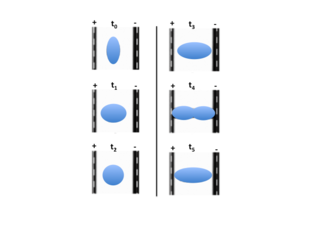 W
WElectrohydrodynamic droplet deformation is a phenomenon that occurs when liquid droplets suspended in a second immiscible liquid are exposed to an oscillating electric field. Under these conditions, the droplet will periodically deform between prolate and oblate ellipsoidal shapes. The characteristic frequency and magnitude of the deformation is determined by a balance of electrodynamic, hydrodynamic, and capillary stresses acting on the droplet interface. This phenomenon has been studied extensively both mathematically and experimentally because of the complex fluid dynamics that occur. Characterization and modulation of electrodynamic droplet deformation is of particular interest for engineering applications because of the growing need to improve the performance of complex industrial processes(e.g. two-phase cooling, crude oil demulsification). The primary advantage of using oscillatory droplet deformation to improve these engineering processes is that the phenomenon does not require sophisticated machinery or the introduction of heat sources. This effectively means that improving performance via oscillatory droplet deformation is simple and in no way diminishes the effectiveness of the existing engineering system.
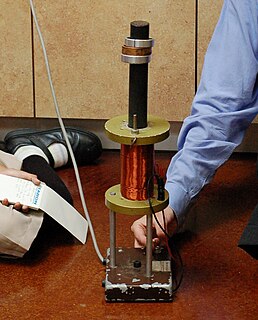 W
WElectrodynamic suspension (EDS) is a form of magnetic levitation in which there are conductors which are exposed to time-varying magnetic fields. This induces eddy currents in the conductors that creates a repulsive magnetic field which holds the two objects apart.
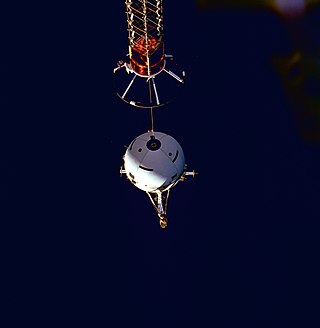 W
WElectrodynamic tethers (EDTs) are long conducting wires, such as one deployed from a tether satellite, which can operate on electromagnetic principles as generators, by converting their kinetic energy to electrical energy, or as motors, converting electrical energy to kinetic energy. Electric potential is generated across a conductive tether by its motion through a planet's magnetic field.
 W
WElectromagnetic or magnetic induction is the production of an electromotive force across an electrical conductor in a changing magnetic field.
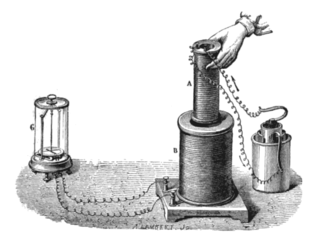 W
WFaraday's law of induction is a basic law of electromagnetism predicting how a magnetic field will interact with an electric circuit to produce an electromotive force (EMF)—a phenomenon known as electromagnetic induction. It is the fundamental operating principle of transformers, inductors, and many types of electrical motors, generators and solenoids.
 W
WIn electromagnetism and electronics, electromotive force, is the electrical action produced by a non-electrical source. Devices provide an emf by converting other forms of energy into electrical energy, such as batteries or generators. Sometimes an analogy to water pressure is used to describe electromotive force..
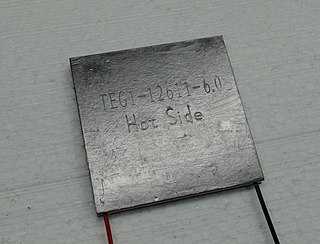 W
WThe Ettingshausen effect is a thermoelectric phenomenon that affects the electric current in a conductor when a magnetic field is present.
 W
WThe Faraday paradox or Faraday's paradox is any experiment in which Michael Faraday's law of electromagnetic induction appears to predict an incorrect result. The paradoxes fall into two classes:Faraday's law appears to predict that there will be zero EMF but there is a non-zero EMF. Faraday's law appears to predict that there will be a non-zero EMF but there is zero EMF.
 W
WFinite-difference time-domain (FDTD) or Yee's method is a numerical analysis technique used for modeling computational electrodynamics. Since it is a time-domain method, FDTD solutions can cover a wide frequency range with a single simulation run, and treat nonlinear material properties in a natural way.
 W
WIn electromagnetism and electronics, inductance is the tendency of an electrical conductor to oppose a change in the electric current flowing through it. The flow of electric current creates a magnetic field around the conductor. The field strength depends on the magnitude of the current, and follows any changes in current. From Faraday's law of induction, any change in magnetic field through a circuit induces an electromotive force (EMF) (voltage) in the conductors, a process known as electromagnetic induction. This induced voltage created by the changing current has the effect of opposing the change in current. This is stated by Lenz's law, and the voltage is called back EMF.
 W
WAn inductively coupled plasma (ICP) or transformer coupled plasma (TCP) is a type of plasma source in which the energy is supplied by electric currents which are produced by electromagnetic induction, that is, by time-varying magnetic fields.
 W
WIntroduction to Electrodynamics is a textbook by the physicist David J. Griffiths. Generally regarded as a standard undergraduate text on the subject, it began as lecture notes that have been perfected over time. Its most recent edition, the fourth, was published in 2013 by Pearson and in 2017 by Cambridge University Press. This book uses SI units exclusively. A table for converting between SI and Gaussian units is given in Appendix C.
 W
WIn electromagnetism, Jefimenko's equations give the electric field and magnetic field due to a distribution of electric charges and electric current in space, that takes into account the propagation delay of the fields due to the finite speed of light and relativistic effects. Therefore they can be used for moving charges and currents. They are the general solutions to Maxwell's equations for any arbitrary distribution of charges and currents.
 W
WIn electrodynamics, the Larmor formula is used to calculate the total power radiated by a non relativistic point charge as it accelerates. It was first derived by J. J. Larmor in 1897, in the context of the wave theory of light.
 W
WLenz's law, named after the physicist Emil Lenz who formulated it in 1834, states that the direction of the electric current which is induced in a conductor by a changing magnetic field is such that the magnetic field created by the induced current opposes the initial changing magnetic field.
 W
WMaglev is a system of train transportation that uses two sets of magnets: one set to repel and push the train up off the track, and another set to move the elevated train ahead, taking advantage of the lack of friction. Along certain "medium-range" routes, maglev can compete favourably with high-speed rail and airplanes.
 W
WIn the beginning of the 19th century, many experimental and theoretical works had been accomplished in the understanding of electromagnetics. In the 1780s, Coulomb's law of electrostatics had been established. In 1825, Ampère published his Ampère's law. Michael Faraday discovered the electromagnetic induction through his experiments and conceptually, he emphasized the lines of forces in this electromagnetic induction. In 1834, Lenz solved the problem of the direction of the induction, and Neumann wrote down the equation to calculate the induced force by change of magnetic flux. However, these experimental results and rules were not well organized and sometimes confusing to scientists. A comprehensive summary of the electrodynamic principles was in urgent need at that time.
 W
WThe study of electromagnetism in higher education, as a fundamental part of both physics and engineering, is typically accompanied by textbooks devoted to the subject. The American Physical Society and the American Association of Physics Teachers recommend a full year of graduate study in electromagnetism for all physics graduate students. A joint task force by those organizations in 2006 found that in 76 of the 80 US physics departments surveyed, a course using John David Jackson's Classical Electrodynamics was required for all first year graduate students. For undergraduates, there are several widely used textbooks, including David Griffiths' Introduction to Electrodynamics and Electricity and Magnetism by Edward Mills Purcell and D. J. Morin Also at an undergraduate level, Richard Feynman's classic The Feynman Lectures on Physics is available online to read for free.
 W
WIn electromagnetism, a branch of fundamental physics, the matrix representations of the Maxwell's equations are a formulation of Maxwell's equations using matrices, complex numbers, and vector calculus. These representations are for a homogeneous medium, an approximation in an inhomogeneous medium. A matrix representation for an inhomogeneous medium was presented using a pair of matrix equations. A single equation using 4 × 4 matrices is necessary and sufficient for any homogeneous medium. For an inhomogeneous medium it necessarily requires 8 × 8 matrices.
 W
WIn physics and chemistry, the Nernst effect is a thermoelectric phenomenon observed when a sample allowing electrical conduction is subjected to a magnetic field and a temperature gradient normal (perpendicular) to each other. An electric field will be induced normal to both.
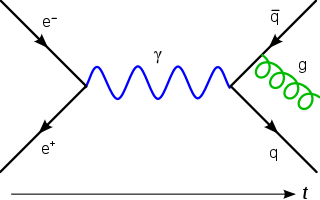 W
WIn particle physics, quantum electrodynamics (QED) is the relativistic quantum field theory of electrodynamics. In essence, it describes how light and matter interact and is the first theory where full agreement between quantum mechanics and special relativity is achieved. QED mathematically describes all phenomena involving electrically charged particles interacting by means of exchange of photons and represents the quantum counterpart of classical electromagnetism giving a complete account of matter and light interaction.
 W
WThe Quantum Vacuum: An Introduction to Quantum Electrodynamics is a physics textbook authored by Peter W. Milonni in 1993. The book provides a careful and thorough treatment of zero-point energy, spontaneous emission, the Casimir, van der Waals forces, Lamb shift and anomalous magnetic moment of the electron at a level of detail not found in other introductory texts to quantum electrodynamics.
 W
WA rocket sled launch, also known as ground-based launch assist, catapult launch assist, and sky-ramp launch, is a proposed method for launching space vehicles. With this concept the launch vehicle is supported by an eastward pointing rail or maglev track that goes up the side of a mountain while an externally applied force is used to accelerate the launch vehicle to a given velocity. Using an externally applied force for the initial acceleration reduces the propellant the launch vehicle needs to carry to reach orbit. This allows the launch vehicle to carry a larger payload and reduces the cost of getting to orbit. When the amount of velocity added to the launch vehicle by the ground accelerator becomes great enough, single-stage-to-orbit flight with a reusable launch vehicle becomes possible.
 W
WTransrapid is a German-developed high-speed monorail train using magnetic levitation. Planning for the Transrapid system started in 1969 with a test facility for the system in Emsland, Germany completed in 1987. In 1991 technical readiness for application was approved by the Deutsche Bundesbahn in cooperation with renowned universities.
 W
WIn radio-frequency engineering and communications engineering, waveguide is a hollow metal pipe used to carry radio waves. This type of waveguide is used as a transmission line mostly at microwave frequencies, for such purposes as connecting microwave transmitters and receivers to their antennas, in equipment such as microwave ovens, radar sets, satellite communications, and microwave radio links.
 W
WWeber electrodynamics is an alternative to Maxwell electrodynamics developed by Wilhelm Eduard Weber. In this theory, Coulomb's Law becomes velocity dependent. In mainstream contemporary physics, Maxwell electrodynamics is treated as the uncontroversial foundation of classical electromagnetism, while Weber electrodynamics is generally unknown.